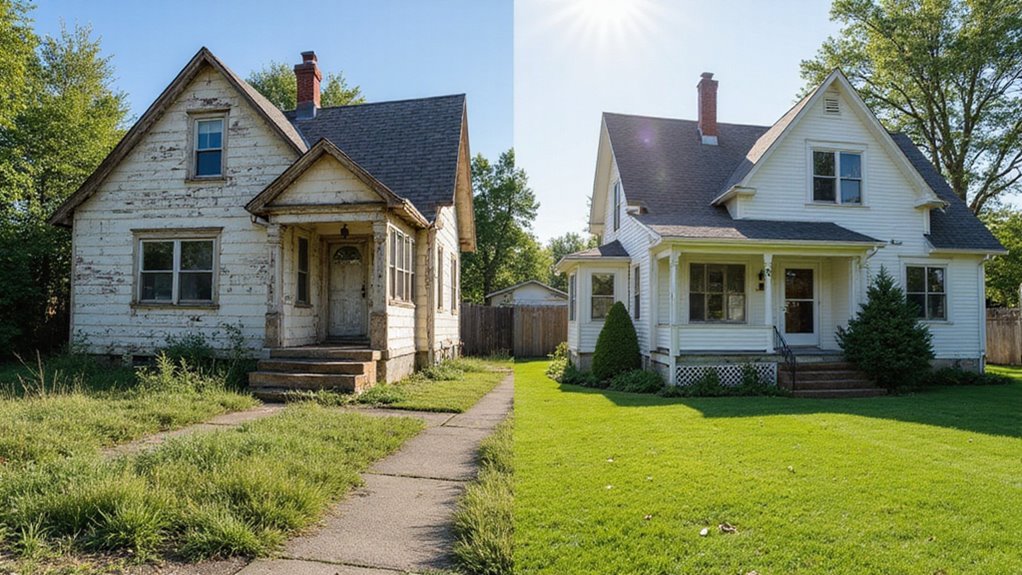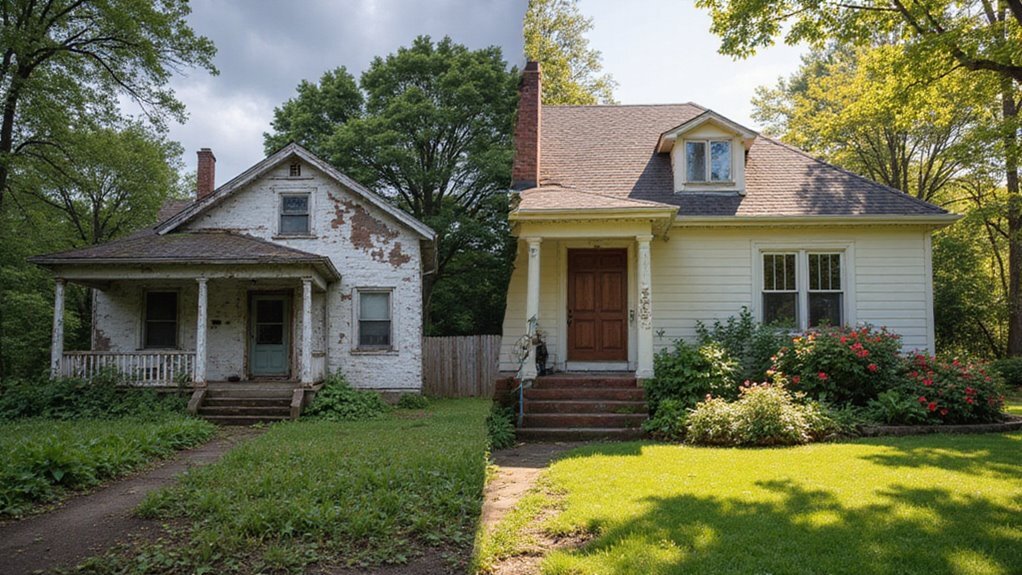Selling your home can be a daunting task with many decisions to make. Should you fix everything before listing, or sell as-is? The choice affects your time, effort, and money. Nearly 25% of U.S. home sales are as-is, showing it’s a common option.
This choice can stress you out fast. What if repairs cost too much? What if delays hurt your plans? Traditional sales might drag on, while as-is sales could mean less profit. But don’t worry, there’s a way to decide.
As-is sales often save time, while traditional sales may boost profit. By comparing both, you can pick what fits your goals and situation best. This blog will guide you to make the right choice for selling your home easily.
Key Takeaways
- As-Is sales speed up closings by skipping repairs, unlike traditional sales which often involve lengthy preparations.
- As-Is sales attract niche buyers like investors, while traditional sales reach a broader demographic.
- Traditional sales can yield higher prices through competitive bidding, unlike typically lower-priced As-Is sales.
- As-Is sales reduce seller liability for repairs, whereas traditional sales require staging and disclosures.
- Traditional sales involve complex paperwork and delays, while As-Is sales offer simpler, faster transactions.
What Is As-Is Home Sale?

An “as-is” home sale means buying or selling a property in its present state. The seller makes no repairs or upgrades before closing. This concept is vital to understand if you consider this option. It implies that you accept the home with all flaws, seen or unseen. The deal proceeds without the seller fixing any issues at all.
If you choose this path, know it can speed up the process. You must assess the property carefully before agreeing. What you see is exactly what you get in this deal. Make sure you’re ready for any hidden problems after closing. Additionally, selling as-is often attracts cash buyers who are looking for quick transactions without contingencies.
Key Features of As-Is Home Sale
When you opt for an as-is home sale, you’re looking at distinct advantages like a fair price, cash offers, and a faster sale compared to traditional methods. You’ll also appreciate the simplified process, as it cuts out lengthy negotiations and repair demands, saving you time and stress. Keep in mind, though, that your buyer pool might be limited, often attracting investors or cash buyers seeking a deal. Additionally, selling as-is means the property is bought in its current condition with no repairs required, eliminating the burden of maintenance or unexpected costs before closing.
Fair Price
Determining a fair price for an as-is home sale requires balancing fairness and value. As-is homes often sell cheaper due to needed repairs. You should assess the property’s condition and compare it to nearby homes.
Here’s how to set a fair price:
- Check Repair Costs: Estimate expenses for big fixes since buyers consider these.
- Look at Similar Sales: Study recent sales of comparable as-is homes for trends.
- Seek Professional Help: Consult real estate experts if you need pricing guidance.
Cash Offer
Savvy buyers see cash offers as a key feature of as-is home sales. They choose this method for its simplicity. If you sell as-is, expect buyers who want quick, certain deals. Their motivation often comes from avoiding financing delays. Investors or fixer-upper seekers prefer cash to handle repairs themselves.
Cash offers also bring simple contract terms. You’ll find fewer conditions since lender approvals aren’t needed. If appraisals are skipped, negotiations become easier. This gives you confidence in a stable transaction. Choosing cash can make the as-is sale process smoother.
Faster Sale
Selling your home doesn’t need to take forever. Choose an as-is sale for a quicker process that fits your schedule. This option connects you with Urgent Listings, drawing buyers who want fast deals. You’ll enjoy Speedy Transactions, often closing within weeks.
Here’s how it works better:
- Immediate Attention: Buyers for as-is homes are usually prepared to move quickly.
- Fewer Holdups: If you skip repairs, the sale avoids unnecessary delays.
- Swift Finishes: Cash buyers or investors often ensure rapid closings.
If you pick as-is, you’ll move forward fast and leave slow traditional sales behind.
Simplified Process
Selling your home as-is offers a simple and fast process. It focuses on efficiency for your convenience. You avoid major repairs or staging efforts. This cuts down on both time and stress. If you choose this path, negotiations over fixes are skipped. Buyers accept the property in its current condition.
This method reduces steps from listing to closing. Paperwork becomes minimal with fewer issues to handle. If delays occur, they are often shorter than traditional sales. You gain control over a clear transaction. Complexities won’t slow you down in this approach. It’s a practical choice for easy selling.
Limited Buyer Pool
Selling a home as-is directly limits your pool of potential buyers. Only specific groups show interest in such properties.
Here’s why an as-is sale reduces your buyer audience:
- Investors Lead: Investors often seek as-is homes for profitable deals in unique markets.
- DIY Fans: Buyers with renovation skills might consider taking on the challenge.
- Bargain Seekers: Some buyers want cheap homes, even if flaws exist.
If you target these niche groups, pricing and marketing must be sharp. With fewer buyers, offers could be scarce.
Reduced Contingencies
Selling your home as-is means reduced contingencies are a key feature. Buyers often sign a Contingency Waiver for this. They skip protections like inspection or financing clauses. This makes the sale faster and avoids delays. If buyers don’t request repairs, closing happens quickly.
However, risks exist with fewer contingencies. Buyers might worry about hidden problems and hesitate. You could face liability if issues appear later. Weigh these risks against a speedy sale. If challenges arise, ensure you’re ready to handle them.
What is the Traditional Home Selling Process?

The traditional home selling process is a clear path to sell your property. It begins with preparing your home for sale. You might get a Home Appraisal to know its worth. Then, with an agent, you list it and manage offers.
Here’s what you usually handle:
- Staging Your Home: You declutter and refresh it to impress buyers.
- Signing Legal Contracts: You complete agreements with buyers for clarity.
- Hosting Open Houses: You invite buyers to see your home personally.
This journey takes time, but if you commit, you control the results. With effort, you can secure a great deal. Additionally, setting a reasonable asking price is crucial to attract potential buyers quickly.
Key Features of Traditional Home Selling
When you choose traditional home selling, you’re often aiming for a higher price, though you’ll need patience as the process can stretch out over weeks or months. You’ll find it’s a more involved journey, requiring active participation in repairs, staging, and negotiations to attract a broader pool of buyers. Keep in mind, this approach demands your time and effort but can maximize your return if executed well. Avoid common pitfalls by conducting a comparative market analysis with your agent to price your home competitively.
Potential for Higher Price
Selling a home traditionally can lead to a higher price if you put in the effort. By making repairs and staging, you make your property attractive to buyers. They may offer more for a well-prepared home. With smart pricing and marketing, you could gain from rising demand. If the market is hot, your returns might increase significantly.
Here’s why this strategy works:
- Better Attraction: A polished home draws more buyers who might compete.
- Stronger Position: If your property looks great, you can ask for more.
- Perfect Timing: Listing during high demand can bring premium offers.
Slower Sale Process
Traditional home selling often takes longer than other methods. This slower pace requires patience due to several factors. If you choose this path, expect delays from various influences. Regional trends might reduce buyer interest in your area. Market conditions could also lead to extended negotiation times.
Legal hurdles can further delay the process significantly. You must handle complex paperwork and local regulations. Disclosures are mandatory and often time-consuming to complete. If buyers request inspections, the timeline stretches even more. Appraisals might also add extra waiting periods.
If you’re not ready for delays, frustration may arise. Understanding these challenges helps you stay confident. With preparation, you can manage the extended timeline effectively.
More Involved Process
A traditional home sale requires your active involvement from start to finish. It’s not a simple list-and-wait process. You must dedicate time and energy to make your home appealing.
Here’s what to expect with this detailed approach:
- Staging Your Home: You’ll spend time cleaning, decorating, and organizing to attract potential buyers.
- Working with Agents: You will discuss pricing and terms with a realtor for a good deal.
- Managing Many Tasks: You’re in charge of repairs and paperwork to keep things moving smoothly.
If you stay committed, you can handle this challenging journey well.
Broader Buyer Pool
Selling your home traditionally connects you with many potential buyers. Your property gains Global Reach through online platforms. If you list online, international buyers can notice your home easily. This expands your market beyond local boundaries.
This buyer pool also includes Diverse Demographics with varied needs. Young professionals might seek starter homes for themselves. Growing families could look for bigger spaces to settle. If retirees join, they may want comfortable, smaller places. Investors often hunt for profitable opportunities too. Such variety boosts your chances of a quick sale. With good marketing, your home can attract the right audience.
Why Selling A House As-Is Is A Good Option

Why is selling your house as-is a wise choice? It offers freedom and fits perfect market timing for you. If you want less stress, skip repairs and staging to save time and money. You can move ahead easily.
Here’s why this option suits you:
- Quick Deals: Buyers accept the home’s state, so you can finalize sales fast.
- No Fix Worries: If repairs are needed, let buyers manage them on their own.
- Clear Costs: You’ll avoid surprise expenses and know your exact earnings.
- Hassle-Free Process: Cash buyers often handle properties in existing condition, eliminating the need for any renovations or enhancements.
Conclusion
When deciding how to sell your home, consider the differences between selling as-is and traditional sales. Selling as-is provides a quick process, avoiding repairs and delays. If speed is your priority, this option works well.
If you choose a traditional sale, expect a slower journey but potentially higher profits. Patience can pay off with the right buyer. Should you need a fast solution, we buy houses for cash, ensuring a hassle-free experience.
We at Limitless Homes of KC are ready to help with your home-selling needs. Whether you want speed or profit, reach out to us. Contact Limitless Homes of KC today for personalized guidance.

